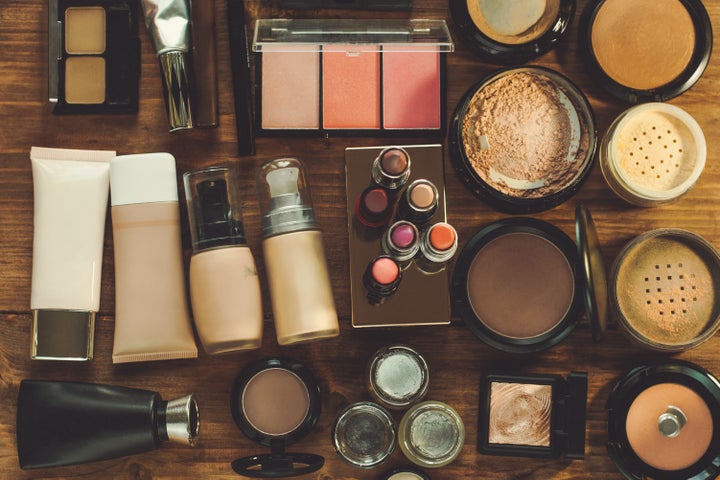
Instagram is many things.
A means of keeping in touch with friends and trends worldwide in an easy scroll and endorphin popping hit of the like button? Yes.
A conduit to the spreading of information – albeit, that’s not always verifiable? Certainly.
A tool celebrating diversity within beauty? Increasingly, no.
As a makeup artist, I am bombarded by beauty looks on the site from both individuals and brands, which seem to perpetuate a westernised, outdated and male ideal of female beauty. The site has become a microcosm of a bigger system at work dictating what is defined as beautiful; but it’s time we challenge the beauty status quo.
To get to the root of the problem, we must first acknowledge that diversity in beauty is not just about skin tone.
“Available in shades to suit every skin tone!” brands scream, beside paint daubed wrists. Yet the makeup looks that dominate my feed perpetuate a homogeneous, sexualised type of beauty that is constantly and subtly pitched as the ideal – regardless of skin tone.
We are told to contour to create the illusion of an oval face shape.
Variations of different coloured smokey eye shadows are applied to create a western-looking socket and finished with flicked eyeliner.
“Asian or hooded eyelid? Poor you,” we’re told. “Start layering, or – even better – use tape to fake the desired shape!”
Make sure your lips are full and plump.
The newest edition to this obscene rulebook is highlighter painted on cheekbones and the “cupids bow” that would be visible from Space. Tin Man called: he wants the look back.
From Sweden to Australia, LA to Abu Dhabi, #beautyinspo posts on the site regurgitate the same look of female beauty.
The American comedian Tina Fey pre-empted this acknowledgment in her 2011 biography, ‘Bossy Pants’: “Now every girl is expected to have Caucasian blue eyes, full Spanish lips, a classic button nose, hairless Asian skin with a California tan, a Jamaican dance hall ass, long Swedish legs, small Japanese feet, the abs of a lesbian gym owner, the hips of a nine-year-old boy, the arms of Michelle Obama, and doll tits. The person closest to actually achieving this look is Kim Kardashian, who, as we know, was made by Russian scientists to sabotage our athletes.”
Eight years later, whilst this beauty ideal may have shifted from Kim Kardashian to her younger sister, Kylie, for women and young girls it is the creation of a baked, highlighted, contoured, plump-lipped pixie that we are told to strive for in our makeup. This is the look instagram and beauty brands are constantly pitching to us.
When I look at cosmetic face maps or tutorials showing desirable cheek or lip shapes, I often wonder whose perception of beauty were they based on. Who deemed this type of beauty covetable in the first place?
We can make guesses. Big names in beauty and once independent brands are increasingly under the control of a small round table of multinational companies (Estee Lauder, L’Oreal, Unilever, etc,), which themselves are predominantly run by a white, over-50 and male corporate governance.
A comparable example in fashion is the one dimensional ideal endorsed by the Victoria Secret Fashion Show, though this is notably being called out and is affecting their bottom line - no pun intended. But while in the fashion world, body shape conformity and representation is challenged online and in advertising, the beauty industry remains a sticky web of uniformity, which until now has not been held to scrutiny. Questioning the beauty status quo is one crucial way of changing it.
So what part does social media to play in upholding this ideal? Instagram and the beauty problem could be likened to Facebook and the fake news scandal. Whilst it is debatable whether the site created the problem, it is without question that it helps spread, normalise and perpetuate an untruth through its ability to target and prioritise information – its very business model.
The site acts as a beauty reference map for younger generations. Instagram has over 500 million active daily users, more than 90% of its users are under 35, and over 50% of them are women. For example, a fourteen-year-old likes a photo of Kylie Jenner, and they are targeted with posts of a similar aesthetic. Instagram directs you towards and keeps you within the bounds of a one-dimensional beauty corridor and you don’t even realise it.
More broadly, social media sites have struggled to police their content since they emerged over the past decade. If they won’t take responsibility, as users we can try and take back some control by being more cautious with our likes, being more aware of what we are targeted with, and by seeking out variety in what we see.
My favourite part of the modern makeup landscape is that individuals from so many different backgrounds, genders and sexual orientations, feel able to use and enjoy makeup. Makeup instagram ‘influencers’ are also often assertively confident and empowered young men and women; the homogeneous looks they churn out are as a result disappointing, seeming to fly entirely in the face of that independence.
2019 must see a shift to celebrating more diverse types of beauty, face shapes, ages as well as skin tones, and a broader questioning amongst the makeup community of why and who is telling us to create the aesthetic we see propagated on instagram.
Eleanor Taylor is a makeup artist. You can find examples of her work here.